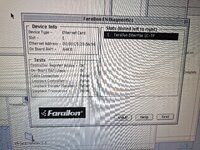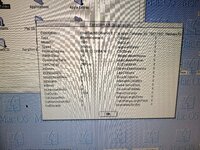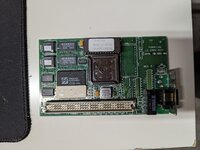I’m attempting to setup a Farallon LC PDS card with an RJ-45 connector I had lying around in a Performa 637CD I recently obtained. I originally picked up the card for an LCII that’s in storage.
The card installs fine, and powers on with a green LED, but so far I have not been able to get a network connection using System 7.5.3 with Classic Networking or Open Transport. I tried configuring the network manually and dynamically.
I installed this driver from the macintosh garden: https://macintoshgarden.org/apps/farallon-lc-pds-ethernet-driver-setup
Running the diagnostics from that software package does offer some clues, but I’m not sure if it’s indicating a hardware failure or configuration error. Screenshots attached. It looks like the card is attempting to send packets, but all fail.
The card installs fine, and powers on with a green LED, but so far I have not been able to get a network connection using System 7.5.3 with Classic Networking or Open Transport. I tried configuring the network manually and dynamically.
I installed this driver from the macintosh garden: https://macintoshgarden.org/apps/farallon-lc-pds-ethernet-driver-setup
Running the diagnostics from that software package does offer some clues, but I’m not sure if it’s indicating a hardware failure or configuration error. Screenshots attached. It looks like the card is attempting to send packets, but all fail.



